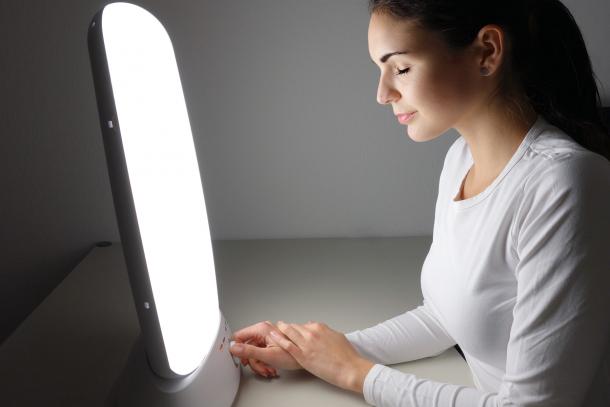Sunlight is a natural mood booster. Unfortunately, given our location so far north of the equator, Canadians tend to get less of it this time of year. For many of us, it’s still dark when our alarm goes off in the morning, and the sun sets long before the day is done. It’s a stark contrast to those long summer days and evenings.
Less sunlight can leave us feeling tired, lethargic, and low.
“Light affects our whole system,” says Ashley Nixon, a PhD candidate who studies the impact of light on sleep and mental health at The Royal’s sleep research lab.
Both light and darkness influence our “body clock,” a.k.a., our circadian rhythms. Circadian rhythms are 24-hour cycles that influence some of our most essential bodily functions, such as hormone release, temperature, hunger, digestion, mood, and of course, our sleep-wake cycle.
Decreased daylight exposure can disrupt our circadian rhythms and lead to low mood.
The “winter blues” is something many of us experience this time of year. Characterized by fatigue and low motivation, it means we’re more likely to reach for snack foods or pour ourselves another cup of coffee.
Seasonal Affective Disorder (SAD) is associated with a sharper decrease in mood and concentration, changes in appetite, and weight issues. There's also an increase in fatigue and sleep disturbances including hypersomnia, which is a greater need to sleep more.
Fortunately, there is a way to help alleviate symptoms of seasonal depression this time of year. We just have to gain back a bit of what we’re missing: light.
Treatment for Seasonal Affective Disorder (SAD)
“We know that light is a good treatment for SAD. It's recommended,” says Nixon. “It does help increase mood and energy levels.”
Nixon says that getting a good dose of light in the morning should be part of our daily routine whenever possible.
“The gold standard would be to get yourself more exposed to outdoor light,” she says. Opening the blinds, going for walks in the morning, or just turning on more lights are all good things to do.
Light modulates how the brain processes emotions. Consequently, having a change in light, as occurs during the winter, may change how our brains read emotions . Light has energy boosting effects which activates the brain and helps us feel more alert and vigilant. As a result, the low light of early winter mornings causes us to miss out on these benefits of light.
Dr. Elliott Lee, the director of the Sleep Disorders Clinic at The Royal, "absolutely" recommends light therapy.
“One thing that light therapy does, and this is probably why it's helpful for people with SAD, is it helps realign our circadian rhythm with our sleep cycle. Somehow that synchronization and/or stimulation has benefits for mood symptoms,” says Lee.
We can get more light in our lives naturally by sitting near a bright window while drinking our morning coffee, but if sunny mornings are few and far between, artificial light can fill this gap.
Nixon uses wearable light glasses in her research but notes that desktop SAD lamps can be a less expensive alternative, and if used correctly, can give us the dose of light we might be missing. (Nixon encourages anyone who suspects they have SAD-related symptoms to speak to their doctor.)
“You want more light because you're lacking it in the winter, but the key is really the timing of how you use that increased light,” explains Nixon. All light has an impact. Getting too much light two hours before bedtime can adversely impact our sleep-wake cycle, and yes, this includes mobile phones and television screens.
Although light therapy is well established as a treatment for SAD, more research is needed to see if this can be used to treat other mood disorders.

Lee points to the studies of Dr. Raymond Lam of the University of British Columbia. Lam’s research has shown that even people who don't have a seasonal pattern to their mood symptoms could benefit from light therapy, if used consistently.
Nixon is currently involved in a study at The Royal which is testing whether light therapy can relieve depressive symptoms in young adults by correcting sleep disturbances.
Her hope is that researchers will someday have a clearer understanding of why some people respond to light therapy and others do not, so that therapy for mood disorders – including light therapy – can be personalized to the individual.
And for those who cope with seasonal depression, there is some light at the end of the tunnel. The shortest day of the year is the winter solstice, which took place on Monday, December 21, this year. After that, the days start to become longer, and the nights get shorter as spring approaches.

